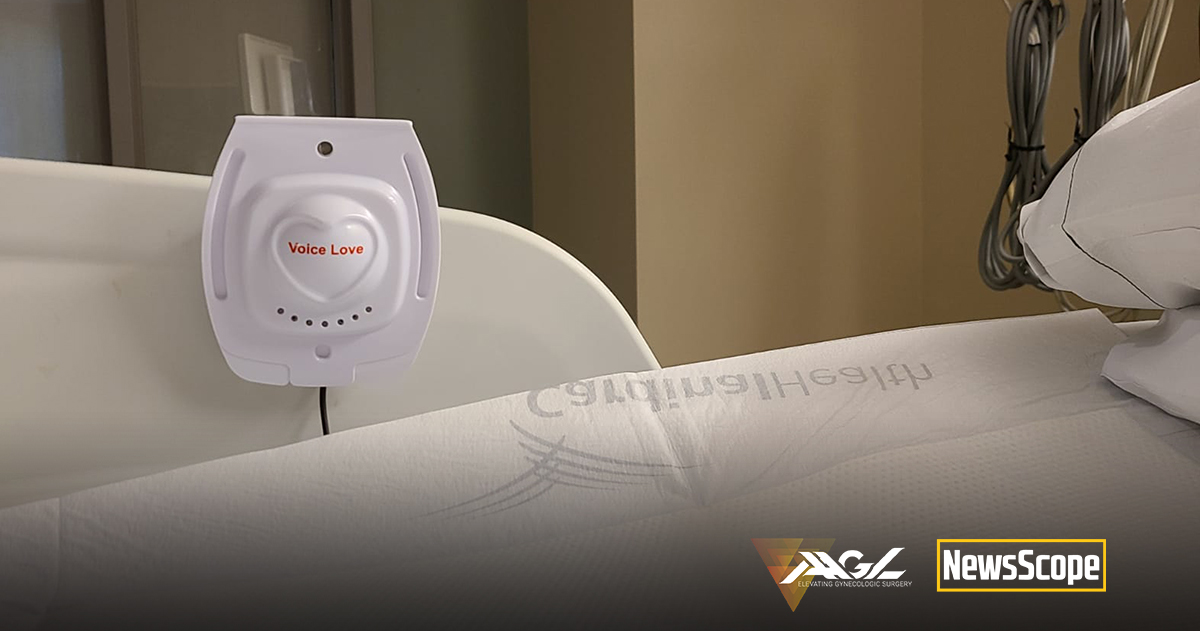Voice Love – In the Era of the Pandemic

In our NYC hospital, at the height of the COVID-19 healthcare crisis, the volume of mechanically ventilated patients was so numerous that it became challenging for the intensive care unit (ICU) providers to update patients’ family members on their loved one’s wellbeing. To assist with this process, I gathered voluntary non-ICU physicians to round with the ICU team, and then call families at home with medical information. It soon became apparent that families wanted not just medical news about their loved one, they wanted their loved one to hear their voice.
 Attempts at communication between the medical team and patients’ families through various methods of technology such as cellphones and iPads presented significant challenges. These methods required healthcare staff time, involve extended patient/staff exposure, risk of breaches of isolation protocol and increased personal protective equipment (PPE) utilization at a time when these resources are scarce. Consequently, my colleague and I Dr. Marc Schiffman, developed a novel communication program called the VoiceLove Project.
Attempts at communication between the medical team and patients’ families through various methods of technology such as cellphones and iPads presented significant challenges. These methods required healthcare staff time, involve extended patient/staff exposure, risk of breaches of isolation protocol and increased personal protective equipment (PPE) utilization at a time when these resources are scarce. Consequently, my colleague and I Dr. Marc Schiffman, developed a novel communication program called the VoiceLove Project.
The VoiceLove Project, modifies a preexisting inexpensive, portable, child’s walkie-talkie device, that records a message from a cell phone app, and then automatically plays the message through a speaker. To transform this child’s walkie talkie speaker for use in an ICU, we designed a novel medical protective case, that allowed the speaker to attach to a patient’s bedrail, secure a charger, prevent inadvertent transmission of sounds, and allow for infection control for the device.
Over the next 5 months, we performed a pilot study of the VoiceLove program in our NYC hospital. We integrated 160 devices into the ICU system, and the feedback from families, ICU nursing staff and ICU providers was overwhelmingly positive.
 Nurses reported a reduction in incoming phone calls for them in the units, helping their workflow and avoiding extras rounds of donning PPE. Family members cited relief that they could sing and pray to their loved one without burdening the staff and expressed that the ability to communicate through the device made them feel present. Anonymous usage data shows that over 19.5 K messages were sent over the first 4 week period.
Nurses reported a reduction in incoming phone calls for them in the units, helping their workflow and avoiding extras rounds of donning PPE. Family members cited relief that they could sing and pray to their loved one without burdening the staff and expressed that the ability to communicate through the device made them feel present. Anonymous usage data shows that over 19.5 K messages were sent over the first 4 week period.
Currently, we are launching VoiceLove throughout the country, and hope to do further research in stroke and coma patient’s with VoiceLove communication. We see Voicelove as the new normal in hospital care, where communication with sick loved ones is a right not an option.
For more information please contact Voicelovedoctors@gmail.com






